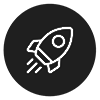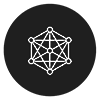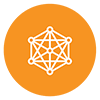Eclipse SDV Developer Console and T-Systems Hypercube - Key Connected Car Services in Action
T-Systems Hypercube is the potential central backbone for cross-domain automotive software lifecycle management. Hypercube brings the DevOps principle to the Software Defined Vehicle, by enabling data-driven software development across multiple vehicle domains, operations of software defined fleets and providing data-enabled insights.
Hereby Hypercube strongly relies on interaction with eclipse projects:



